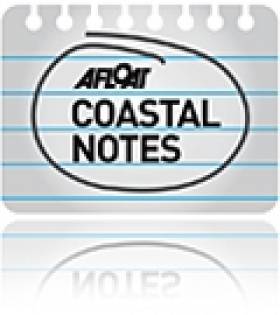Displaying items by tag: Portsmouth Historic Dockyard
Shackleton’s 'Present Day' Endurance Faces the Scrap-Yard
#ShackletonShips – With attention focused on job losses at BAE Systems shipyards in Scotland and Portsmouth which is to cease shipbuilding in 2014, the Royal Navy base is also home to the former Antarctic ice patrol survey vessel, HMS Endurance, writes Jehan Ashmore.
As previously reported, the fate of HMS Endurance, which was named in honour of the 'original' Endurance which sank after trapped in ice during Sir Ernest Shackleton's Imperial Trans-Antarctic expedition of 1914-1918, and according to Ships Monthly is now likely to be scrapped.
HMS Endurance, albeit not built at Portsmouth's historic shipyard that notably launched King Henry VIII's Mary Rose (see new museum) more than 500 years ago, also suffered a serious incident having nearly foundered off Chile in 1991. She was towed to the UK but was never repaired.
As previously reported on Afloat.ie, there are two other vessels directly named in honouring the famed Irish-born polar explorer.
Firstly is the 1995 built RRS Sir Ernest Shackleton which was originally MV Polar Queen built for Rieber Shipping of Bergen.
Ships Monthly also reports that the Norwegian company recently sold sister MV Polar Protector (A173) to the UK Ministry of Defence for £51m as the current Royal Navy patrol and survey vessel for the South Atlantic and Antarctic.
The second vessel is the Dublin Port Company tug Shackleton named in 2010.
Belfast Harbour Boat Tours and WWI Warship Gem
#BELFAST HARBOUR TOURS- If there was ever a time to take a tour of Belfast Harbour, it is now on board the Lagan Boat Company, particularly in light of on-going developments as previously reported to keep the WWI veteran cruiser HMS Caroline in the city, writes Jehan Ashmore.
The 98-year old ship which is the last survivor of the famous Battle of Jutland in 1916, is facing another battle from threat of scrapping or a new life albeit towed to Portsmouth's Historic Dockyard for preservation. Yet there is a campaign to keep the historic ship in the city as tourist attraction.
A great opportunity is provided on board the excursion as the very informative guided-boat tour gives unrivalled access to HMS Caroline moored in Alexandra Dock.
While en-route, the excursion boat which departs from Donegall Quay (several minutes-walk from City Hall), passes the new Titanic Belfast visitor attraction and the world famous symbolic Samson and Goliath cranes at Harland & Wolff.
As the boat enters Alexandra Dock, passengers get very much up close and personal views of HMS Caroline, as the riveted hull complete with portholes looms above. As of a result, one immediately senses a different era in shipbuilding techniques with her cruiser stern and highly flared bow. In addition her distinctive profile of three funnels resembling liners also of old and a tripod foremast.
Since she first came to Belfast in 1924, HMS Caroline has performed various roles. She acted as a floating administrative base during WWII. She then became headquarters and training ship for the Royal Naval Volunteer Reserve in Northern Ireland.
Her career came to an end after 97 years with the Royal Navy, when formally decommissioned by the MoD when reserves transferred to HMS Hibernia (not a ship) in Thiepval Barracks in Lisburn during March 2011. For more about the campaign and proposals to save the ship in her homeport, click HERE






























































